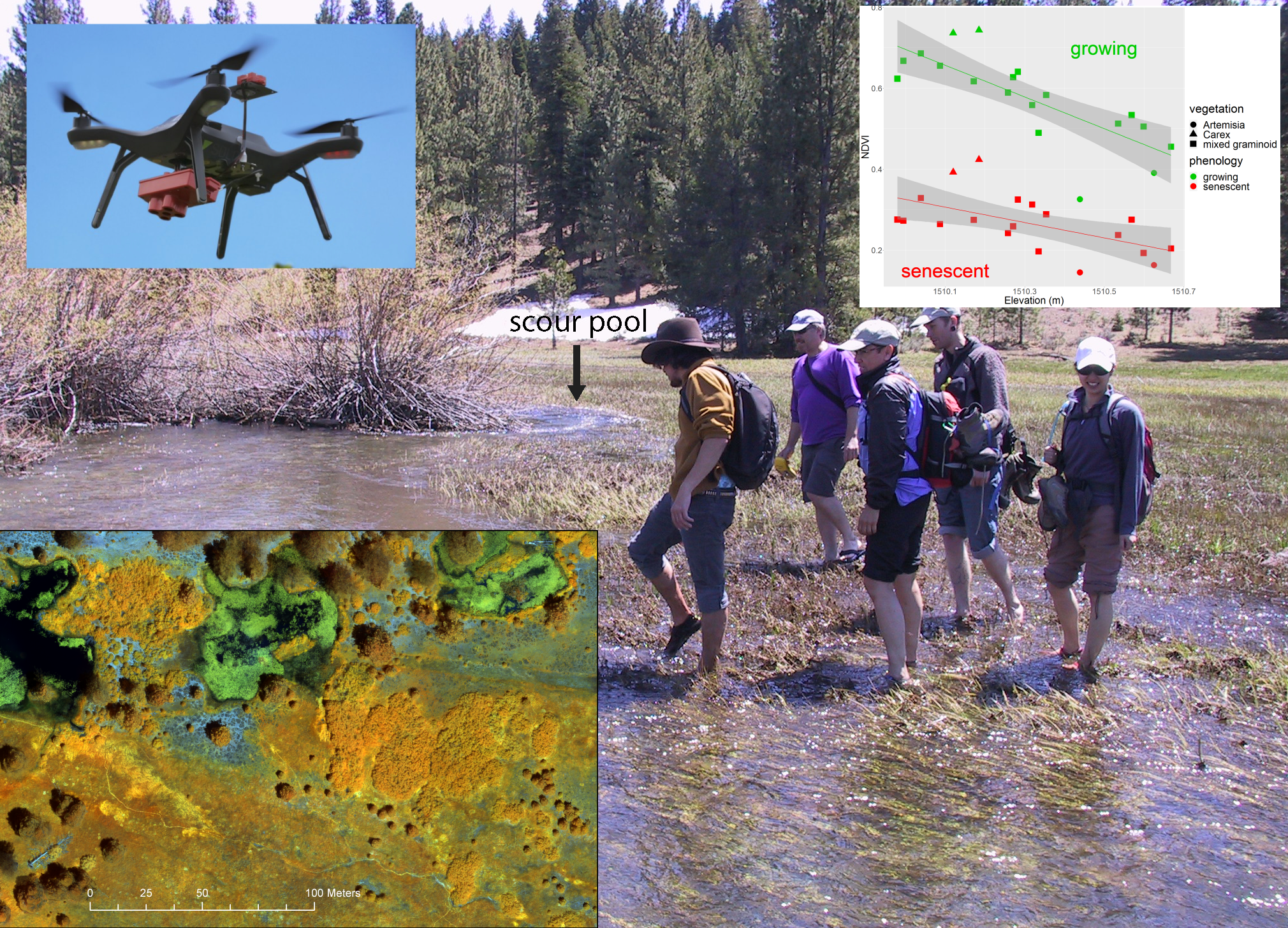Unpiloted Aerial System (UAS)-Supported Biogeomorphic Analysis of Restored Sierra Nevada Montane Meadows

Davis, J.; Blesius, L.; Slocombe, M.; Maher, S.; Vasey, M.; Christian, P.; Lynch, P. Unpiloted Aerial System (UAS)-Supported Biogeomorphic Analysis of Restored Sierra Nevada Montane Meadows. Remote Sens. 2020, 12(11), 1828; https://doi.org/10.3390/rs12111828.
The benefits of meadow restoration can be assessed by understanding the connections among geomorphology, hydrology, and vegetation; and multispectral imagery captured from unpiloted aerial systems (UASs) can provide the best method in terms of cost, resolution, and support for vegetation indices. Our field studies were conducted on northern Sierra montane meadows (with ≤70 km2 watershed area). The meadows exist in various stages of ecological restoration. Field survey methods included GPS + laser-leveling channel survey, cross-sections, LiDAR, vegetation sampling, soil measurements, and UAS imaging. A sensor captured calibrated blue (465–485 nm), green (550–570 nm), red (663–673 nm), near infrared (NIR) (820–860 nm), and red-edge (712–722 nm) bands at 5.5 cm resolution (as well as thermal at 81 cm resolution) and provided multispectral images and derivative vegetation indices such as the normalized difference vegetation index (NDVI) and red-edge chlorophyll index (Clre). This fine-scale imagery extended our morphometric assessment of post-restoration channel bedform patterns and sinuosity related to Carex-influenced soil properties and Salix influence, and also documented groundwater-related effects via Carex patterns evident from spring snowmelt images, as well as NDVI and Clre (derived from spring and summer images) in growing to senescent phenological stages. Carex was significantly associated with low bulk density and high soil moisture, NDVI, and Clre in low-lying areas, and channel sinuosity was significantly associated with willow influence. Our methods can be applied by restoration managers to assess where projects are threatened by renewed incision and to document levels of carbon sequestration significant to addressing climate change.